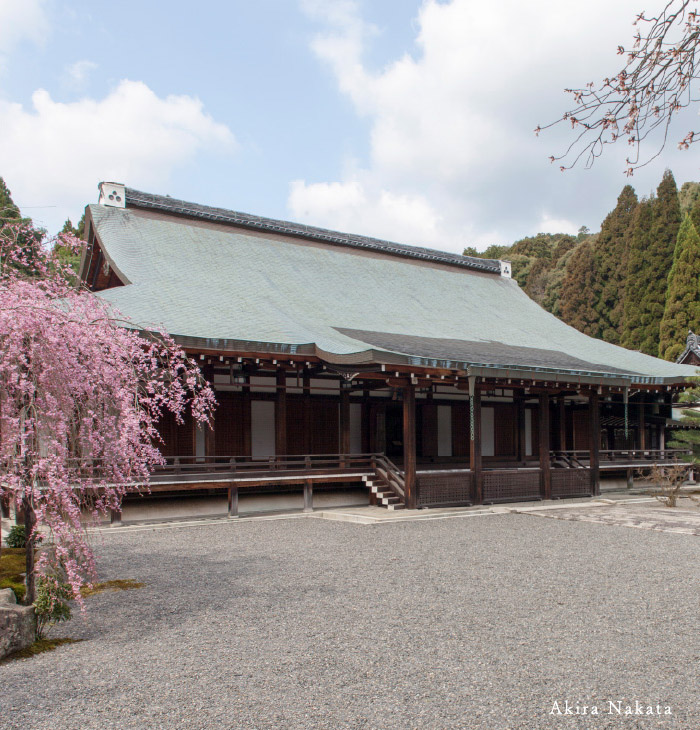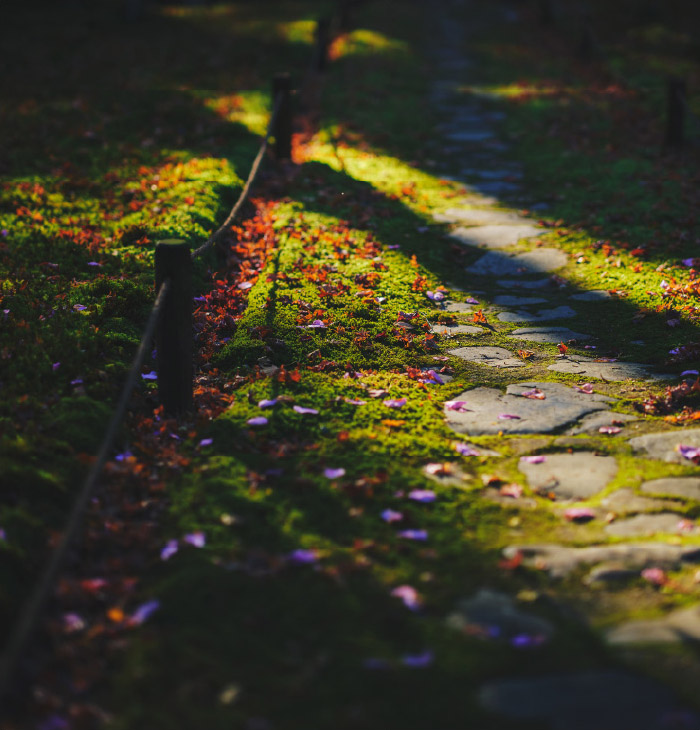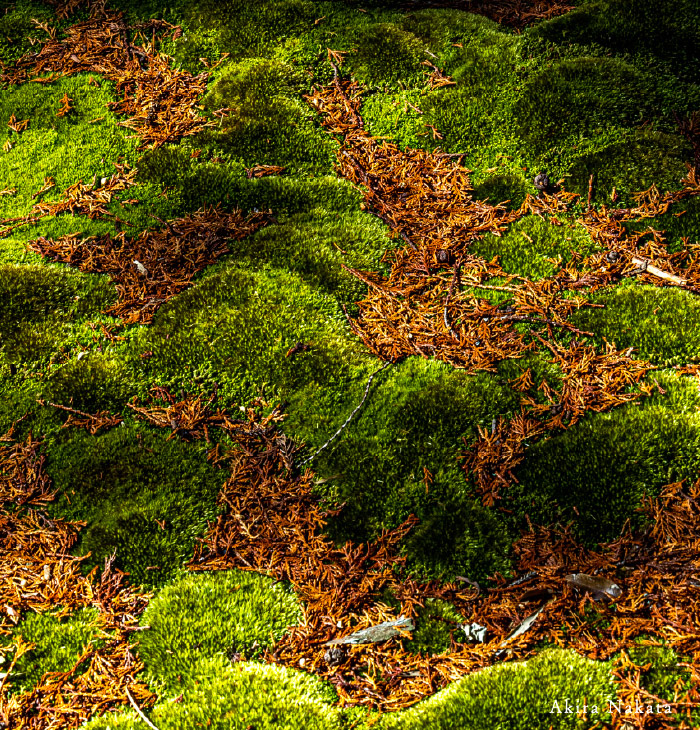about Saihoji
Savoring the Five Seasons
—spring, rainy season, summer, fall, and winter—

Saihoji is tucked away in a serene environment blessed with abundant nature in the valley of the Saihoji River in Nishiyama, Kyoto.
During the Kofun Period (300-538), this area was called the Ryogakutsu (lit. the Langa Cave), and was considered a sacred place closed to lay people. The spring that provides water to the temple grounds to this day is said to have existed since the time of Prince Shotoku (574-622).
The fact that Saihoji has been able to rebuild after being destroyed many times over the course of its long history is a testament to the fact that there is something about the gardens that speaks to people. One of the things that attracts people is the temple’s moss, but when the temple garden was first created in 1339, it was made as a Japanese garden with white sand. The Onin War (1467-1477) and repeated floods of the Saihoji River devastated the temple, but the floods also carried fertile soil that allowed mosses to grow naturally. By the end of the Edo Period in the 19th century, the temple grounds were covered with moss as they are today. Today, the 35,000 m2 (8.65 acres) gardens are covered with more than 120 varieties of moss, each of which has a unique appearance in each of the five seasons of spring, rainy season, summer, fall, and winter.
SpringThe Dazzling Beginning of Life

When in full bloom, the weeping cherry tree in front of the main hall is a sight to behold, giving the entire temple grounds a lovely, flowery atmosphere. The fresh water flowing between the mosses sparkles in the sunlight, and the Japanese bush warblers sing beautiful songs as they celebrate the season of love by the water’s edge. Following on the heels of the cherry blossoms, the fresh greenery grows thicker and the azaleas go into full bloom, revealing a new and different world. It is as if the entire temple is experiencing the joy and warmth of spring in the midst of the eternally flowing river of time.
[Audio] Listening to Spring >>
Rainy seasonWhen the Gardens Joyfully Receive the Rain

Covered with over 120 species of moss, the grounds of the Moss Temple become greener with each rainfall. The green of the moss is especially lush, and the moss garden, composed of curves woven by nature, gives people a sense of refreshment and peace. The lotus flowers floating in the lotus pond in front of the main hall are called “Oga lotus,” and come from seeds that were over 2,000 years old, revived in the present day. The appearance of the pink flowers in bloom is one that has transcended time. By the time they bloom, the end of the rainy season will be approaching, and the season will shift to the height of summer, when the green growth of the trees gathers momentum.
[Audio] Listening to Rainy season >>
SummerA Test of Endurance

The summer heat reaches its peak when the call of the cicadas breaks the silence in the groves of trees. As the crepe myrtles open their lovely flowers in the gardens, the mosses covering the temple grounds must undergo a period of patient endurance. The harsh sunshine can cause mosses to dry and crack, but they are not dying; they are keeping their activity to a minimum and stoically waiting for the next rain to come. The garden in summer teaches us about the power of nature, filled with resilience and the will to live.
[Audio] Listening to Summer >>
FallGreen Amidst the Reds and Yellows

As the scent of the fragrant olive heralds the coming of the fall, the air gradually becomes cooler and cooler. Under the clear sky, the trees on the temple grounds slowly change their colors, creating breathtaking scenes of beauty as the autumn colors spread from day to day. The contrast of the green moss against the red and yellow autumn leaves across the temple grounds is truly impressive, giving visitors the feeling that they have come to a sacred place suggestive of Paradise.
WinterBlanketed by Fallen Leaves

In winter, the garden is bare, but it is also bright, offering clear, unobstructed views. As an evergreen plant, moss remains green in the winter, although its activity slows. During this time when the moss is dormant, patiently awaiting the arrival of spring, the temple avoids brushing the moss with brooms as much as possible, so as not to disturb its sleep. At the beginning of spring, the moss puts forth new growth as temperatures rise. By the time the Japanese bush warblers begin to sing, the moss will be welcoming a new season.
[Audio] Listening to Winter >>
Between the Seasons

Spring, summer, fall, winter, and the rainy season known as “tsuyu.” Each of these five seasons brings its own element of charm to the Saihoji grounds, but there are no clear boundaries between them. The seasons shift slowly, changing the face of the temple from day to day. There are days during the rainy season when the weather is so sunny that you would think it was the peak of summer, and just when you think the spring has come, a blistering, cold wind suddenly sweeps across the gardens. And sometimes the cherry trees misread the seasons, opening their blossoms in the fall instead of the spring.
Saihoji talks about “five seasons” to express the temple’s wish for people to appreciate the ambiguous moments that cannot be neatly encapsulated within the conventional four seasons. The gardens might not meet the expectations you had for the season, but the temple hopes that instead of judging nature and the garden as “good” or “bad,” you will be able to enjoy the garden as it is and feel that you were meant to encounter it in that way and in that moment.

